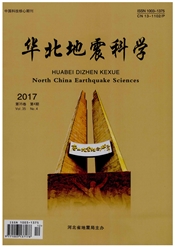

 中文摘要:
中文摘要:
目的了解该院2011~2012年血培养中病原菌的分布及耐药性。方法用Bact/Alert 3D全自动血培养仪进行培养,VITEK2 Compact微生物仪进行鉴定及药敏试验,采用WHONET5.4软件进行分析。结果临床送检的8370份血培养标本中,分离出病原菌719株,阳性率为8.6%,其中革兰阳性菌占62.4%,革兰阴性菌占32.9%,真菌占4.4%;检出率最高的病原菌分别为凝固酶阴性葡萄球菌(42.3%)、大肠埃希菌(15.8%)、金黄色葡萄球菌(10.0%);葡萄球菌对万古霉素、利奈唑胺的敏感率为100.0%;肠杆菌科细菌对亚胺培南、美罗培南的敏感率为100.0%。结论定期进行细菌耐药性监测有助于了解医院细菌耐药性变迁,对指导医院合理应用抗菌药物有重要意义。
 英文摘要:
英文摘要:
Objective To understand the distribution and drug resistance of pathogenic bacteria in blood culture in this hospital from 2011 to 2012. Methods Blood samples were cultivated with Bact/Alert3D automated hemanalysis system, pathogenic bacteria were identified and drug sensitivity test was taken with VITEK 2 compact, the test results were analyzed with WHONET 5.4 software. Results Among the 8370 clinical blood samples, 719 strains of pathogenic bacteria were isolated, the positive rate was 8.6%, Gram-positive bacteria accounted for 62.4%, Gram-negative bacteria accounted for 32.9%, and fungi accounted for 4.4%. The highest detection rate in all bacteria were coagulase negative staphylococcus (42.3%), E.coli (15.8%) and staphylococcus aureus (10.0%) respectively. The staphylococcus were sensitive (100.0%) to vancomycin and linezolid. The enterobacteriaceae were sensitive (100.0%) to imipenem and meropenem. Conclusion Periodic surveillance of bacteria resistance is contributes to understand the changes of hospital bacterial resistance, and it has important significance to guided hospital for reasonable application of antimicrobial agents.
 同期刊论文项目
同期刊论文项目
 同项目期刊论文
同项目期刊论文
 期刊信息
期刊信息
